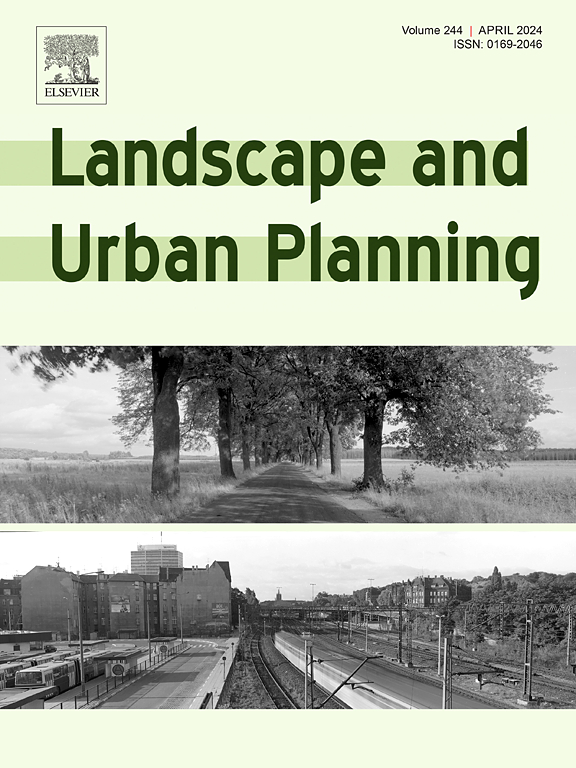Quality or quantity of urban greenery: Which matters more to mental health? Evidence from housing prices in the Pearl River Delta
IF 9.2
1区 环境科学与生态学
Q1 ECOLOGY
引用次数: 0
Abstract
Recent urbanization in China has highlighted the critical role of urban green space (UGS) interventions in alleviating mental health issues associated with urban environments. While existing literature broadly supports the positive effects of green spaces on psychological well-being, less attention has been given to the relative impact of UGS quality versus quantity, particularly when considering housing prices and homeownership. This study investigates the relationship between urban greenery and mental health through the mediating roles of neighborhood ties and place attachment. A random sample of 1309 participants from 30 communities in the Pearl River Delta, China, was analyzed using structural equation modeling to explore multiple mediating and moderating effects. The findings reveal that: (1) neighborhood ties and place attachment predominantly mediate the relationship between UGS quality and mental health; (2) UGS quality has a greater influence on mental health than quantity, particularly among renters; (3) in wealthier neighborhoods, neighborhood ties attenuate the mental health benefits provided by UGS quantity, with renters experiencing more significant mental health improvements from high-quality UGS than homeowners. This study enhances our understanding of how urban greenery affects mental health, emphasizing the importance of UGS quality over quantity. Furthermore, it underscores the need to incorporate high-quality green spaces into the built environment of tenure-mixed neighborhoods to mitigate health disparities linked to housing economic status.
城市绿化的质量和数量:哪个对心理健康更重要?珠江三角洲的房价就是证据
中国最近的城市化进程凸显了城市绿地(UGS)干预在缓解与城市环境相关的心理健康问题方面的关键作用。虽然现有文献广泛支持绿地对心理健康的积极影响,但对绿地质量与数量的相对影响的关注较少,特别是在考虑房价和房屋所有权时。本研究通过邻里关系和地方依恋的中介作用,探讨城市绿化与心理健康的关系。采用结构方程模型分析了珠江三角洲地区30个社区1309名参与者的多重中介和调节效应。研究结果表明:(1)邻里关系和地方依恋在社区生活质量与心理健康的关系中起主要中介作用;(2) UGS质量对心理健康的影响大于数量,尤其是在租房者中;(3)在较富裕的社区,邻里关系减弱了UGS数量带来的心理健康效益,租房者比房主从高质量的UGS中获得的心理健康改善更显著。这项研究增强了我们对城市绿化如何影响心理健康的理解,强调了UGS质量比数量的重要性。此外,它强调需要将高质量的绿色空间纳入终身居住社区的建成环境,以减轻与住房经济状况相关的健康差异。
本文章由计算机程序翻译,如有差异,请以英文原文为准。
求助全文
约1分钟内获得全文
求助全文
来源期刊

Landscape and Urban Planning
环境科学-生态学
CiteScore
15.20
自引率
6.60%
发文量
232
审稿时长
6 months
期刊介绍:
Landscape and Urban Planning is an international journal that aims to enhance our understanding of landscapes and promote sustainable solutions for landscape change. The journal focuses on landscapes as complex social-ecological systems that encompass various spatial and temporal dimensions. These landscapes possess aesthetic, natural, and cultural qualities that are valued by individuals in different ways, leading to actions that alter the landscape. With increasing urbanization and the need for ecological and cultural sensitivity at various scales, a multidisciplinary approach is necessary to comprehend and align social and ecological values for landscape sustainability. The journal believes that combining landscape science with planning and design can yield positive outcomes for both people and nature.
 求助内容:
求助内容: 应助结果提醒方式:
应助结果提醒方式:


